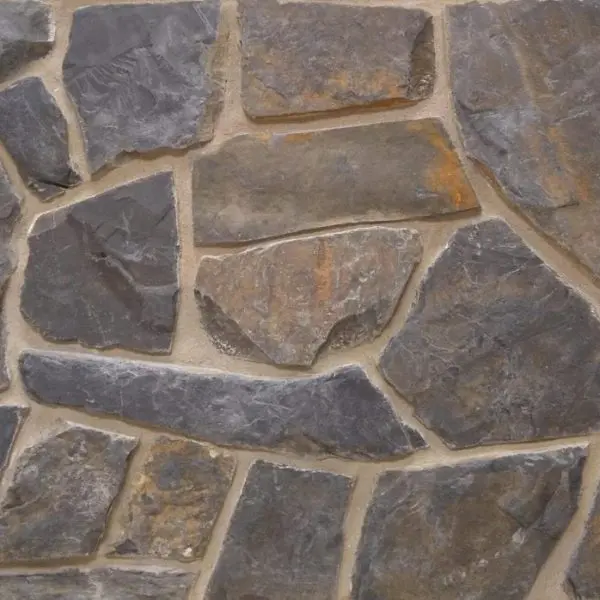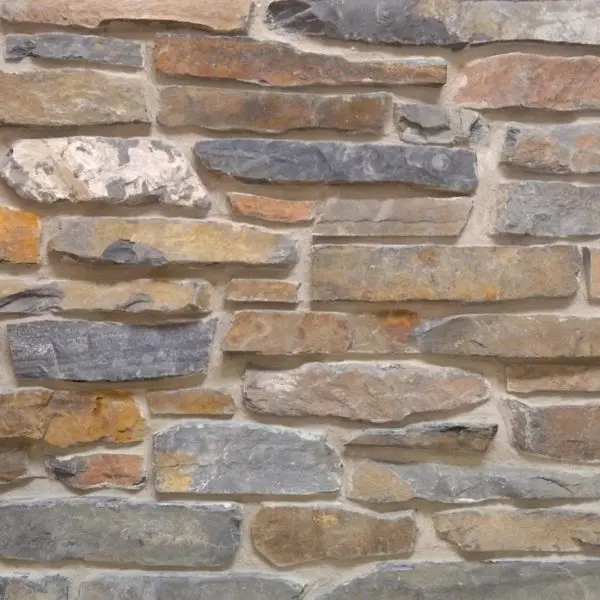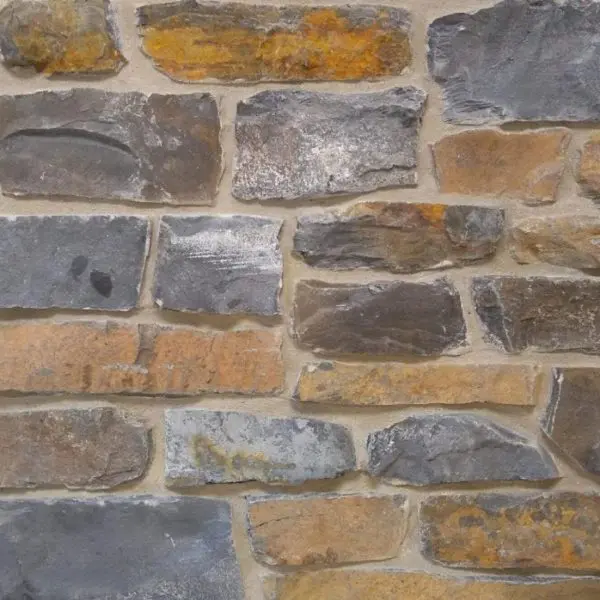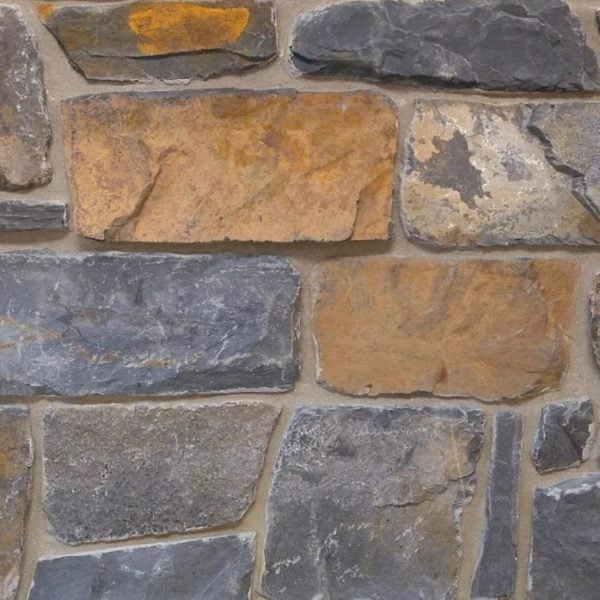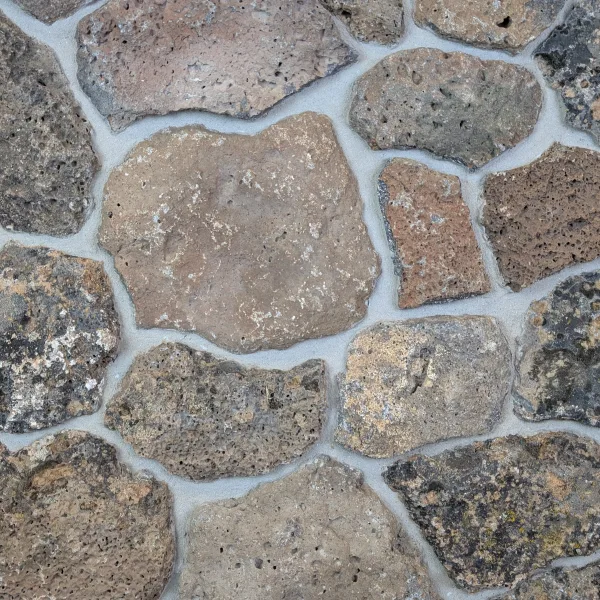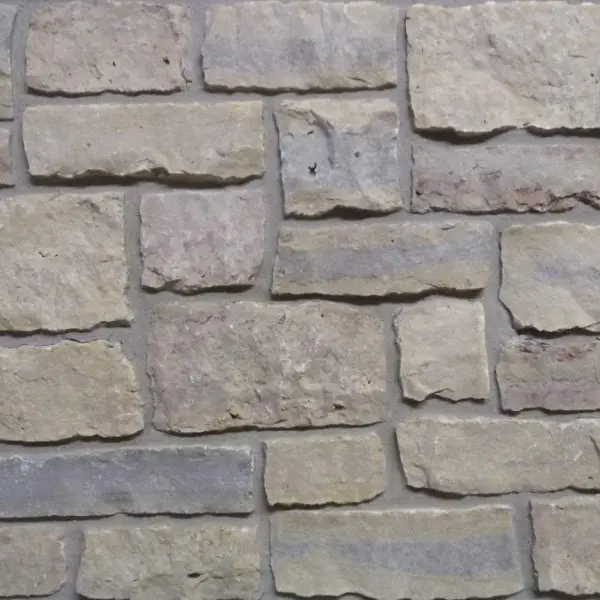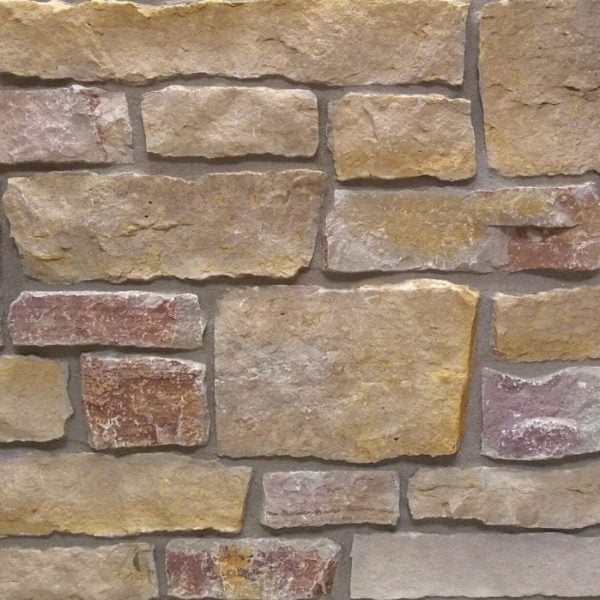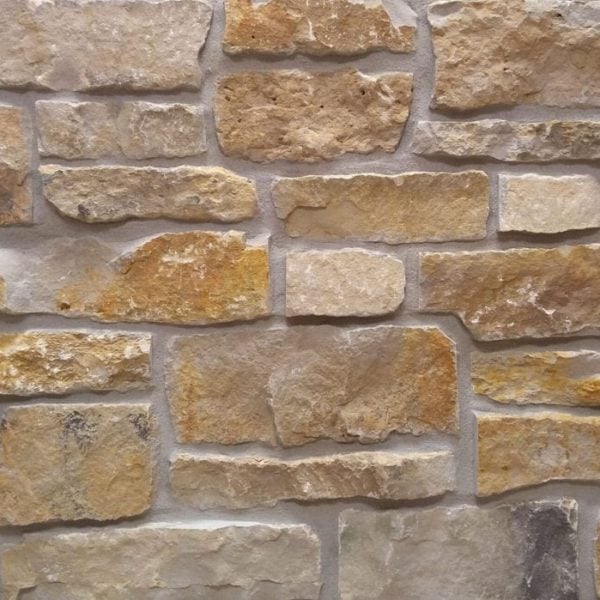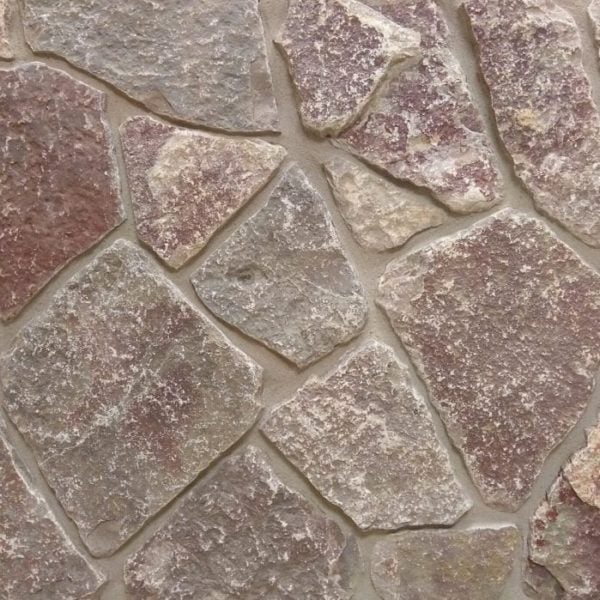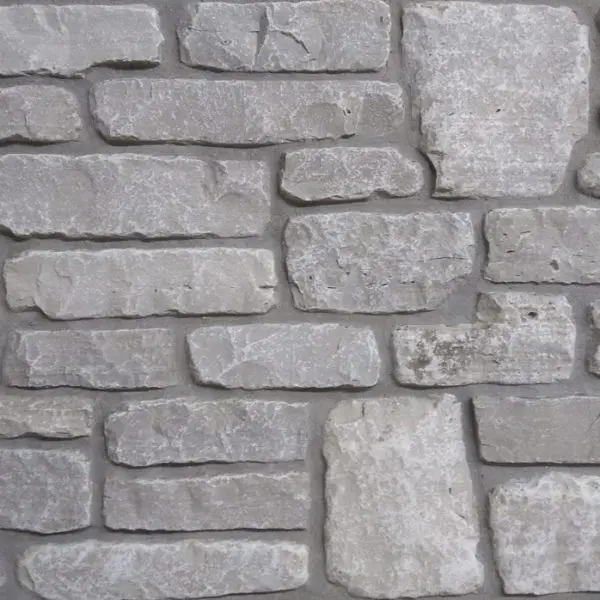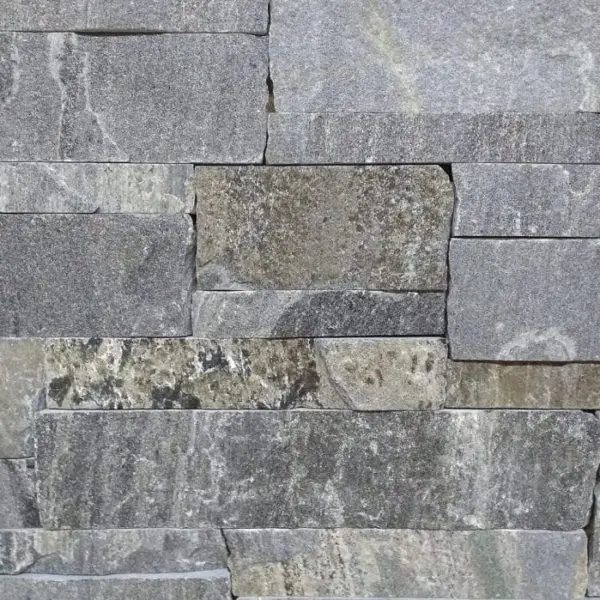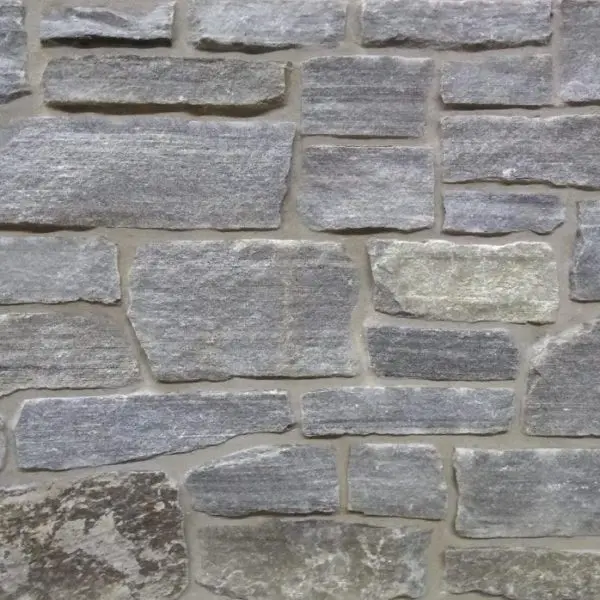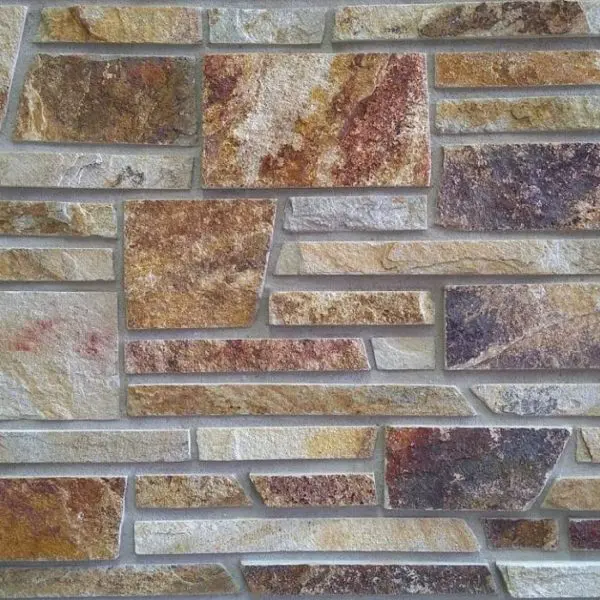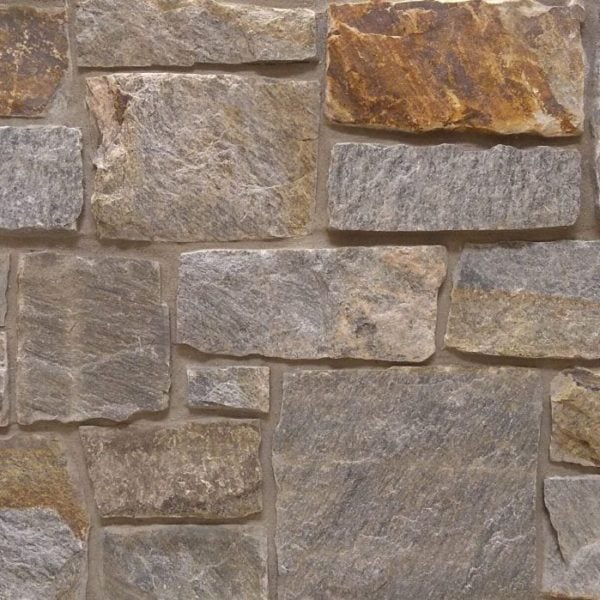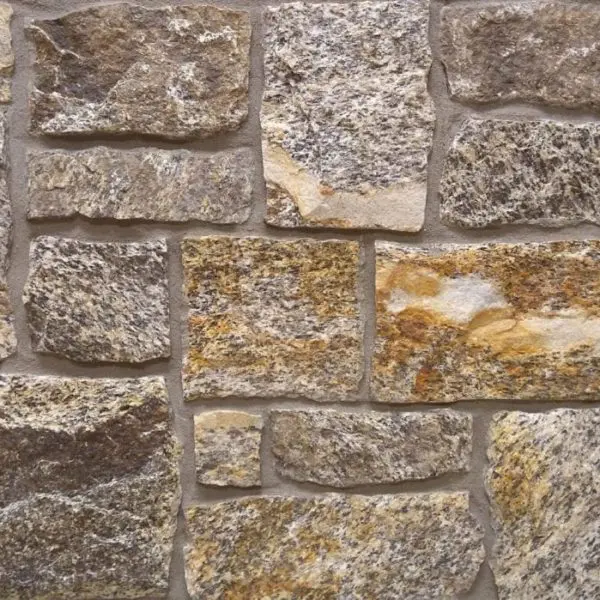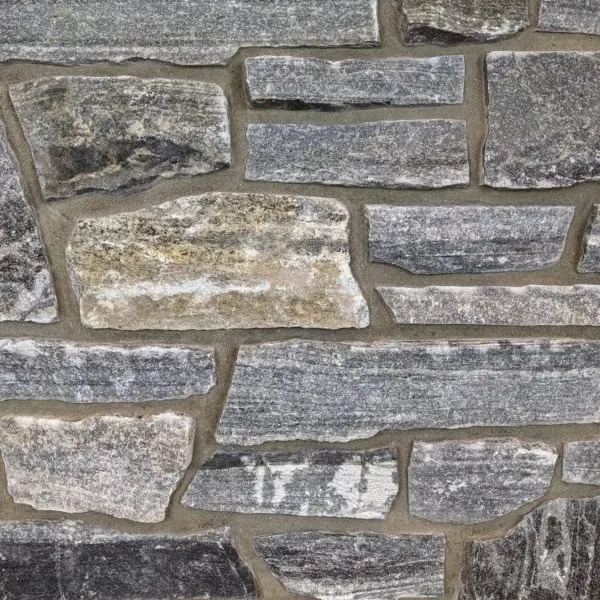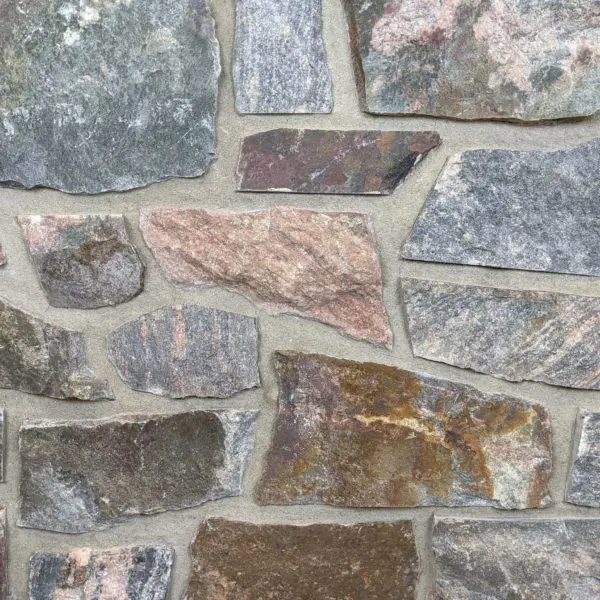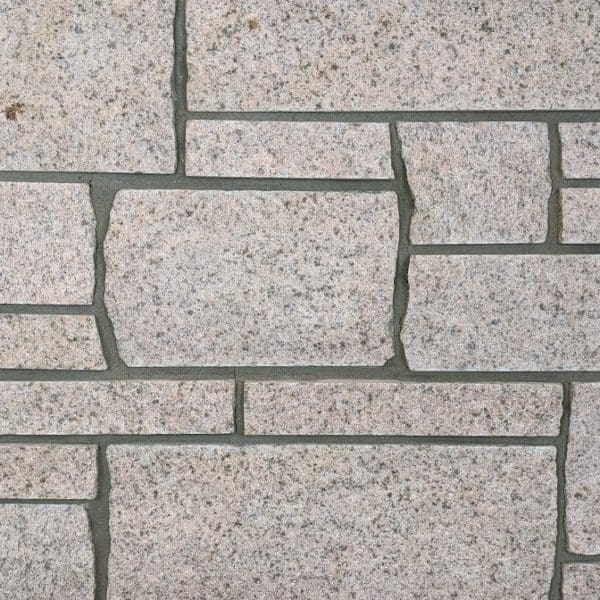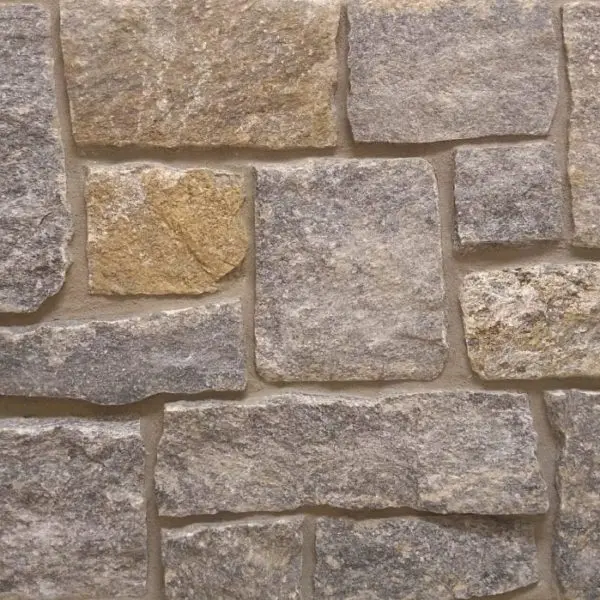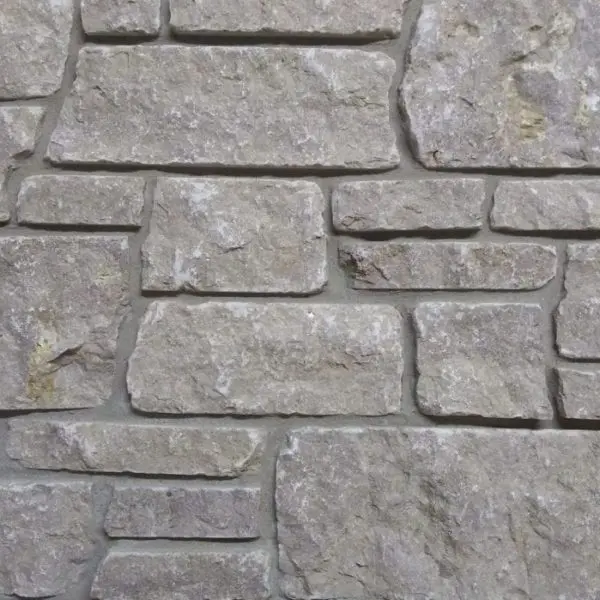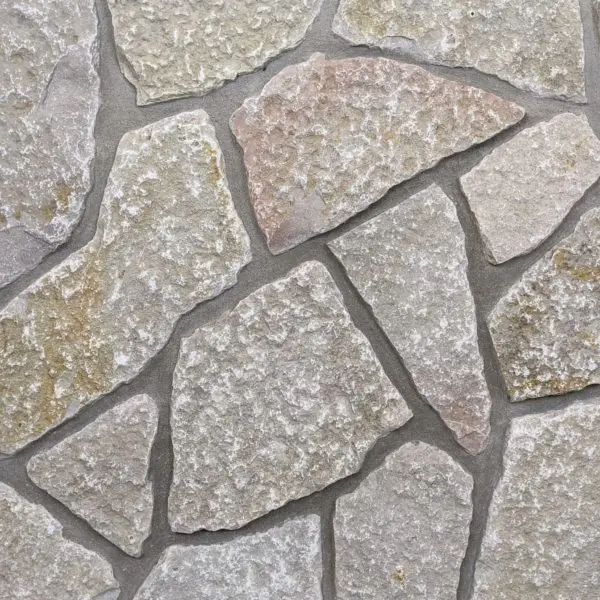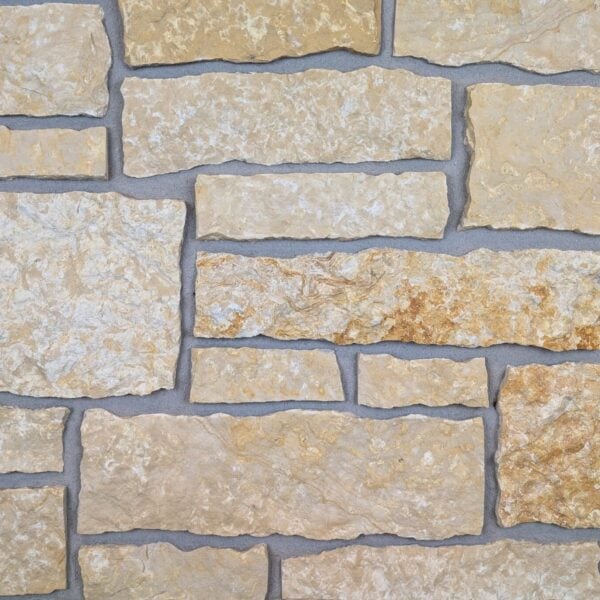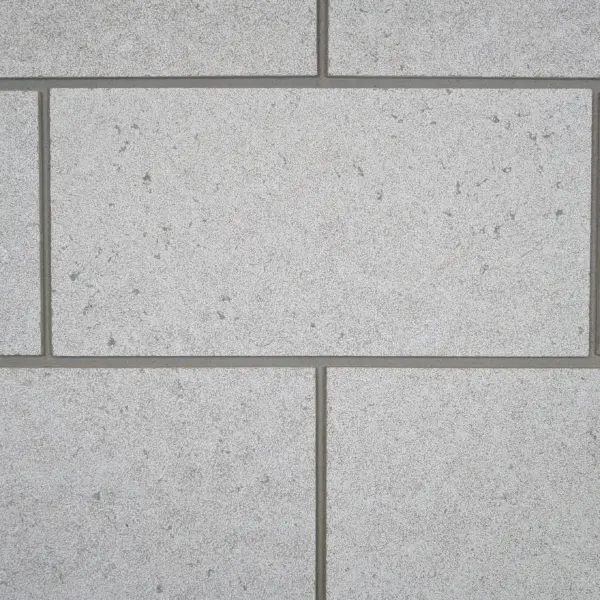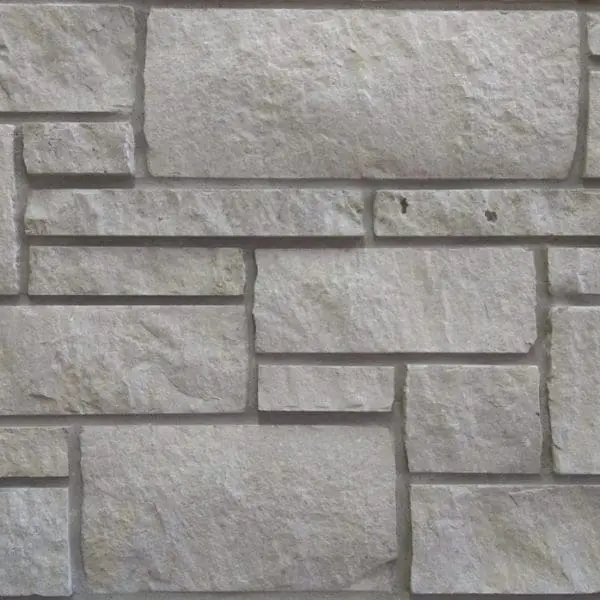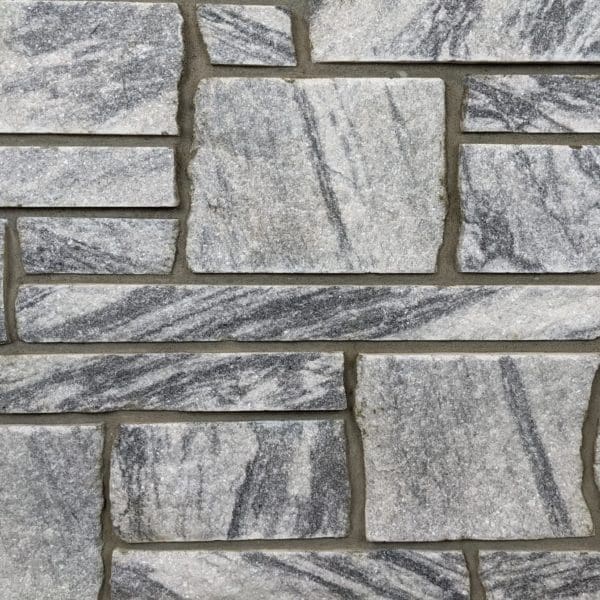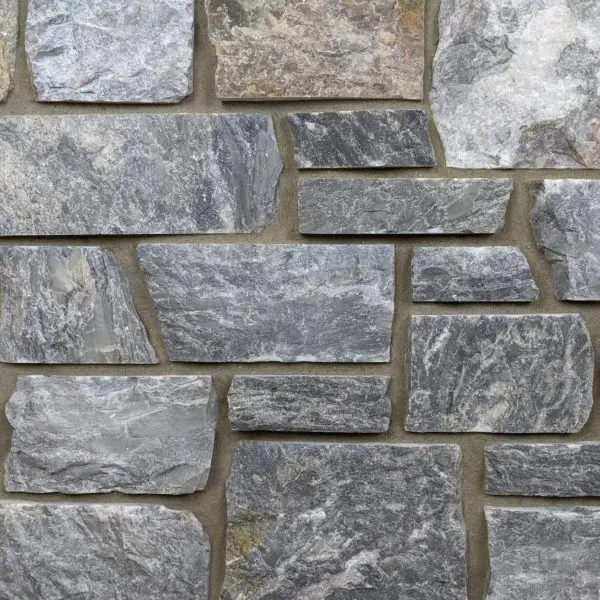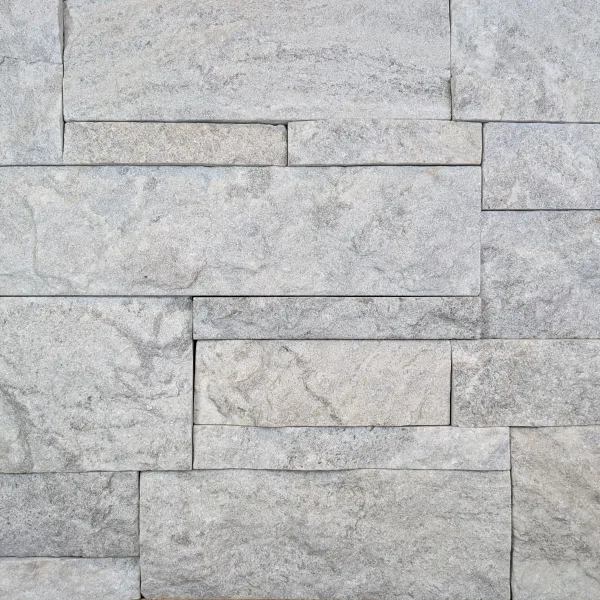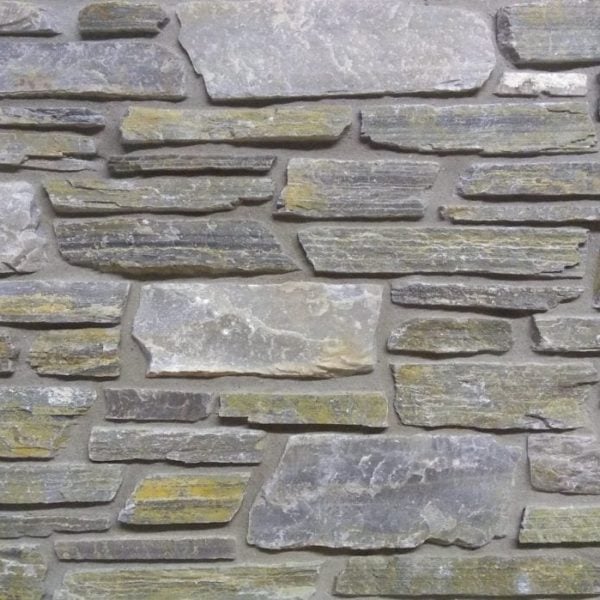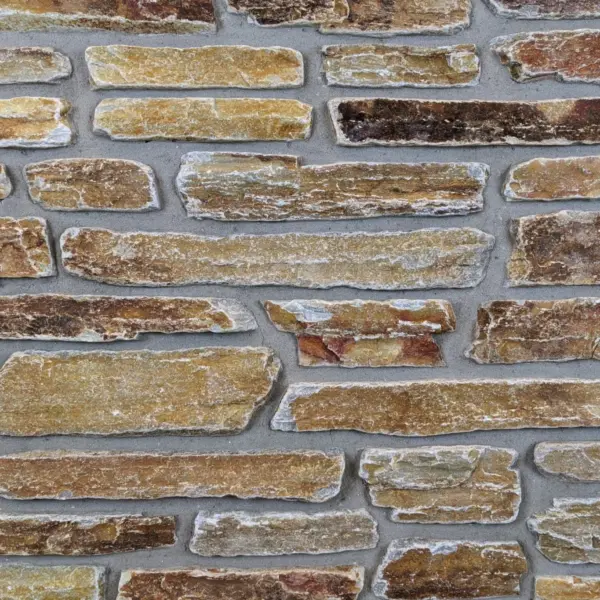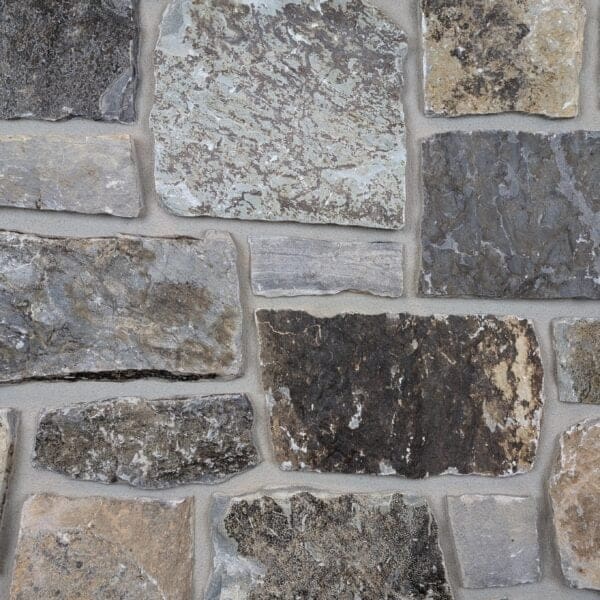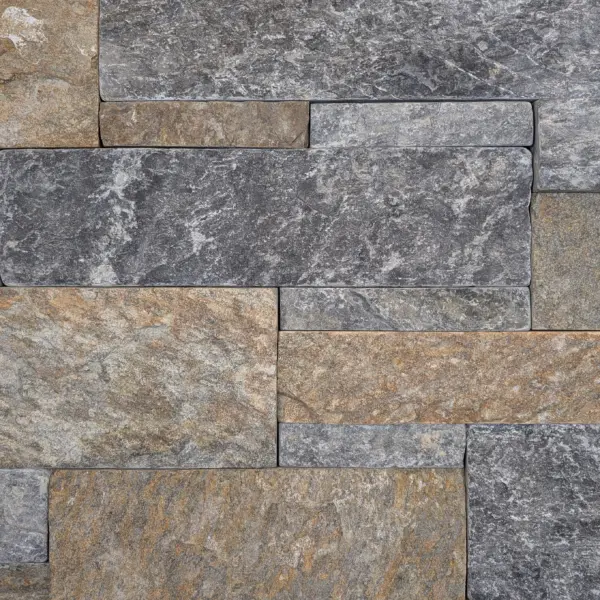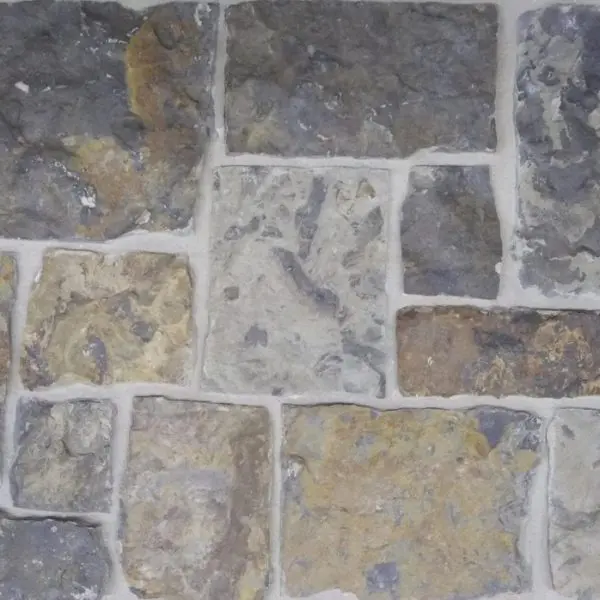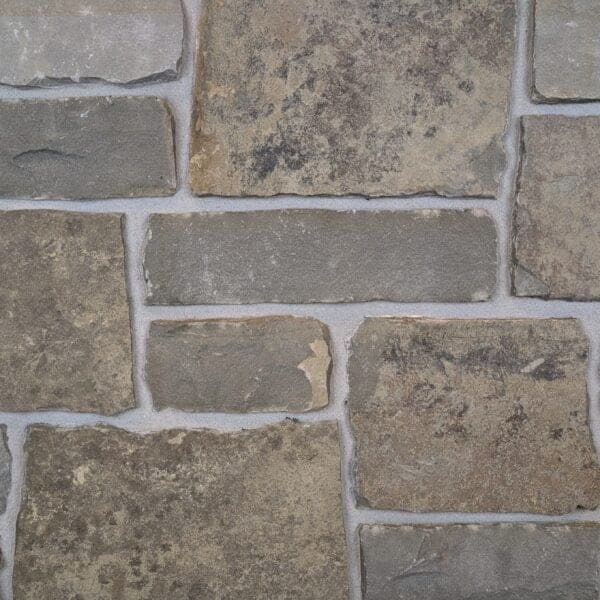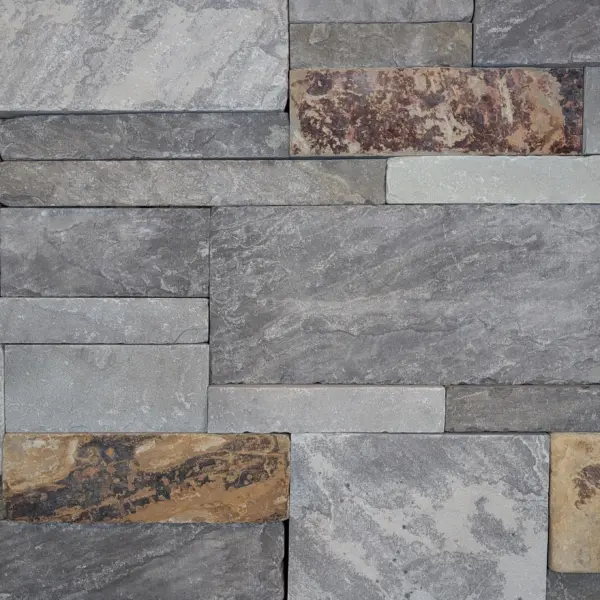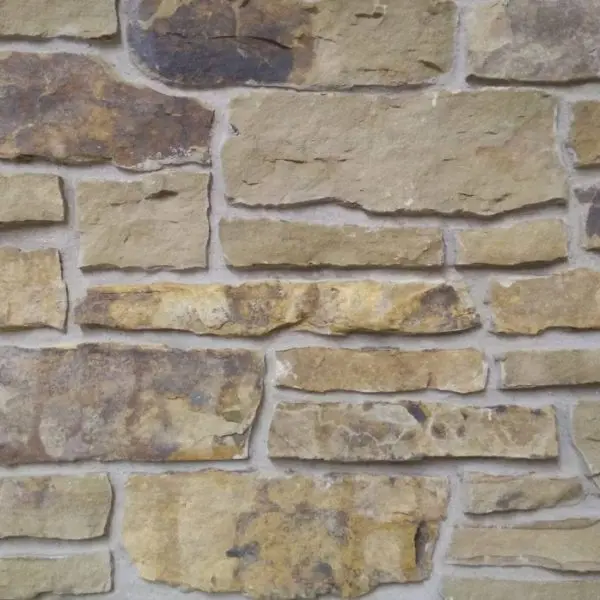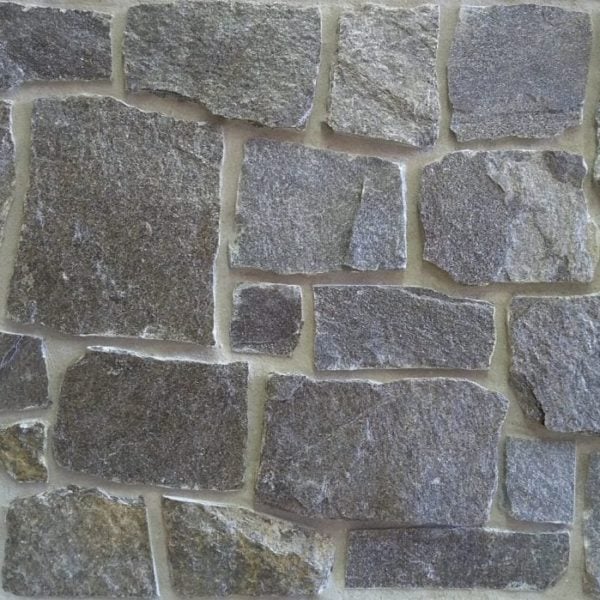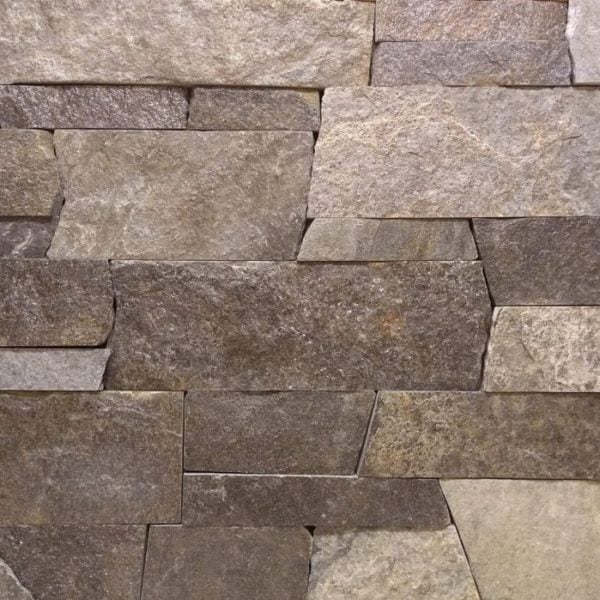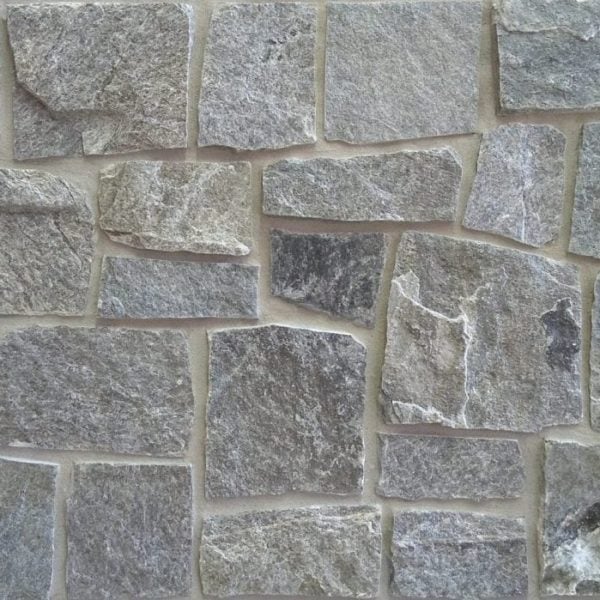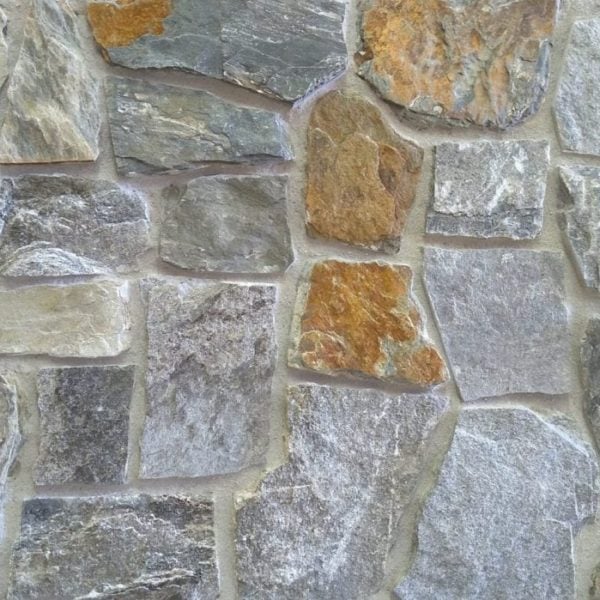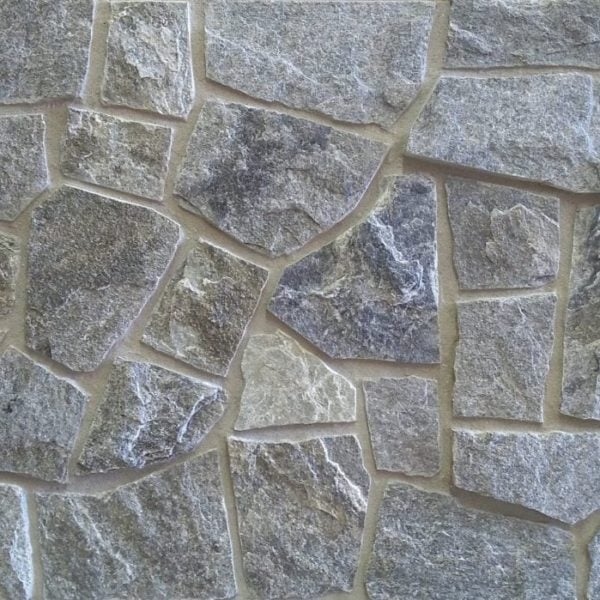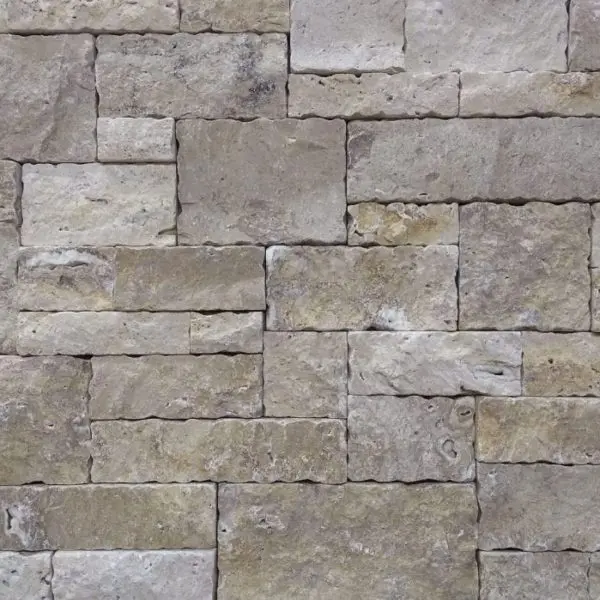Stone Types of Our Natural Stone Veneers
A common question asked by homeowners: “Which stone is the best choice for my project?” There are many different types of stones with different compositions and properties. One is not better than the other. The two factors that are important for natural stone veneer are compressive strength and water absorption.
Compressive strength is the resistance of the stone to breaking under compression. The stone needs to be hard and strong so it will not degrade over time. Although there are some slight differences in compressive strength among Quarry Mill’s real stone veneers, all of our products are premium high-quality natural stone and pass all code requirements.
Water absorption is the proportion of water that can be absorbed by the stone. Water absorption can soften the stone and decrease its strength. Low water absorption is very important as an exterior stone that absorbs too much water can crack during a freeze. The water absorption of all of our natural stone veneers is negligible.
Below are the different types of stones Quarry Mill has available: Basalt, Dolomitic Limestone, Gneiss, Granite, Limestone, Marble, Quartzite, Sandstone, Schist, and Travertine.
-
Basalt
A dark, fine-grained volcanic or igneous rock.
-
Dolomitic Limestone
A sedimentary carbonate rock that is a variant of limestone.
-
Gneiss
The most common rocks on the earth’s surface.
-
Granite
A coarse-grained igneous rock.
-
Limestone
A sedimentary rock formed in shallow marine environments.
-
Marble
A metamorphic rock with variations of color.
-
Quartzite
A metamorphic rock with a high quartz content and a glassy luster.
-
Sandstone
A sedimentary rock that can contain iron oxide, silica, clay, or calcite.
-
Schist
A strong metamorphic rock that is made mostly of mica minerals.
-
Travertine
A sedimentary rock formed around mineral hot springs.
Basalt
Basalt is a dark, fine-grained volcanic or igneous rock. The stone was formed over millenia through volcanic eruption and rapid cooling. Basalt is so fine-grained, the crystals and individual minerals often cannot be distinguished with the naked eye. The stone sometimes shows a columnar structure with elongated grains that grow across the layers in a roughly parallel direction. Basalt combines the hardiness of granite with the color consistency of limestone.
More than 90% of all volcanic rock on Earth is basalt. Basalt stone lines most of the ocean floors and is one of the most common stone types on the moon. Basalt was used for building projects in ancient Rome, the Rosetta stone is made of basalt, and a handful of moai from Easter Island are carved from Basalt. The use of basalt throughout the ages and the historical artifacts and buildings still intact demonstrate the durability of the stone.
Selection of our products
View all productsDolomitic Limestone
Dolomitic limestone is a sedimentary carbonate rock that contains a high percentage of calcium magnesium carbonate. It is a variant of limestone with a hard composition and minimal absorbency. The creation of dolomitic limestone is a debate among the scientific community as there are vast worldwide deposits of dolomitic limestone in the geologic record in contrast to the small amounts formed in modern times.
Dolomitic Limestone was used extensively for building projects in Italy and other European countries, especially during the 16th and 17th centuries. It was used to build Milwaukee’s City Hall; the Flemish Renaissance-inspired building was once the tallest habitable structure in the United States. As a testament to its durability, dolomitic limestone was used to build the Chicago Avenue Water Tower which survived the Great Chicago Fire of 1871 and remains an important landmark today.
Selection of our products
View all productsGneiss
Gneiss is a metamorphic rock subjected to high temperatures and pressures. It is formed by the metamorphism of sedimentary rock. Gneiss displays distinct foliation with alternating layers of distinct minerals. It is characterized by stripes, linear bands, or flowing rivers of color. The stone captures the movement of being squeezed and heated during its creation.
Gneiss is one of the most common rocks on the earth’s surface. The stone forms the basis below most land masses. Gneisses from western Greenland comprise the oldest crustal rocks known at more than 3.5 billion years old. Genesis is an old German word meaning sparkling. The Church of San Giovanni Battista in Switzerland designed by Mario Botta is made of alternating layers of white marble and dark gneiss.
Selection of our products
View all productsGranite
Granite is a coarse-grained igneous rock. It forms from magma with a high content of silica and alkali metal oxides that slowly cools underground. Granite is typically made up of four minerals: feldspars, quartz, mica, and hornblende. The feldspars are white, light gray, or pink, while the quartz is a glass-like gray. The mica and hornblende is black or silver with a flake-like or rectangular structure respectively. The minerals in granite are typically large enough to see with the naked eye and have no distinguishable pattern or grain; granite is sometimes referred to as speckled.
Granite is used to make many buildings and famous monuments. For example, Mount Rushmore in South Dakota is made of granite. The Brihadeeswarar Temple in India built between 1003 and 1010 AD, is also made of granite. The statue of Amenhotep III dating back to 1370 BC is carved out of granite. The Diana, Princess of Wales Memorial Fountain in London and the Vietnam Veterans Memorial in Washington, D.C. are also made of granite.
Selection of our products
View all productsLimestone
Limestone is a sedimentary rock consisting of more than 50% calcium carbonate or calcite. Most limestone was formed in shallow marine environments, such as continental shelves during the Mississippian Period, 330 million years ago. Limestone still forms today in places like the Florida Keys where you can see light-colored seawater due to the dissolved calcite in the ocean. Eventually, the calcite will settle on the sea floor and make a new layer of limestone. Limestone will sometimes contain visible fossils.
The use of limestone dates all the way back to the Great Pyramid and Great Sphinx in Egypt and the columns of the Parthenon in ancient Greece. It is known today as America’s building stone. The Empire State Building in New York, the Pentagon in Virginia, the Biltmore Estate in North Carolina, and nearly three dozen state capitol buildings are all made out of limestone.
Selection of our products
View all productsMarble
Marble is a metamorphic rock formed when limestone is exposed to high temperatures and pressures. Calcite is the principal mineral in limestone. The calcite forming the limestone recrystallizes during metamorphism which forms a denser rock consisting of roughly the same size calcite crystals. The variations of color expressed by marble are due to minor amounts of impurities incorporated with the calcite during metamorphism.
If you’ve seen the Washington Monument or Taj Mahal, you’re familiar with the beauty of marble. Marble is one of the world’s most revered natural materials. Michelangelo used marble to create his sculpture, David, finished in 1504. The Sheikh Zayed Grand Mosque in Abu Dhabi is made of white marble on the exterior and interior. The third largest church in the world, the Cathedral of Santa Maria del Fiore, in Florence is made of marble.
Selection of our products
View all productsQuartzite
Quartzite is a metamorphic rock formed when sandstone with a high quartz content has been exposed to high temperatures and pressures. These conditions fuse the quartz grains together which create a dense rock with roughly the same size crystals and no visible grains. Quartzite often has a glassy luster that reflects light. The light reflection is only visible in person and does not show in photographs. The stone can have color variation due to minor amounts of impurities incorporated within the quartz during metamorphism. Quartzites are the largest and purest concentrations of silica in the Earth's crust.
Quartzite has been used to create buildings throughout history. The Alhambra Moorish castle in Spain is built with quartzite which can be seen on the geometric patterns on the floors and walls. Machu Picchu, the Inca citadel, in Peru features walls made of quartzite and the Marble Arch in the UK has decorative elements sculpted out of quartzite.
Selection of our products
View all productsSandstone
Sandstone is a sedimentary rock formed from cemented sand-sized fragments of preexisting rock called clasts. The cement can be iron oxide, silica, clay, or calcite. The cement can fill differing proportions of the space between the grains creating a denser or softer sandstone. At Quarry Mill, we only quarry tight-grain low-porosity sandstone that passes all code requirements and are approved for all applications. One of the hallmarks of sandstone is cross bedding. Cross bedding is the pattern made as sand grains were carried along by water currents. They look like diagonal lines that have a gentle curve to them.
Sandstone has been used in building for centuries. Petra in Jordan, one of the 7 ancient wonders of the world, is carved from sandstone. The White House and Smithsonian in Washington, D.C. are examples of famous United States sandstone architecture. You’ve also seen sandstone on Manhattan’s brownstones.
Selection of our products
View all productsSchist
Schist is a metamorphic rock that is made mostly of mica minerals and has grains that are large enough to see with the naked eye. The mica minerals give schist its characteristic sparkly luster. Schist also commonly contains quartz which provides extra strength.
Vishnu Schist makes up the deepest part of the Grand Canyon dating back 1.75 billion years. New York City’s skyscrapers are built into schist bedrock. The strength of schist to hold up the tallest buildings in Manhattan demonstrates the durability of the sparkly natural stone.
Selection of our products
View all productsTravertine
Travertine is a sedimentary rock formed by the chemical precipitation of calcium carbonate around mineral hot springs. The travertine-forming process can happen anywhere that has a combination of hot water and limestone. Major travertine quarries exist near Yellowstone National Park, Italy, Turkey, Mexico, China, Peru, and Iran. Travertine has soft hues of white, cream, yellow, pink, tan, or red. The color variations are due to small amounts of iron or sulfur in the stone.
Travertine has been used in building for over 200,000 years. The stone was used to build the Colosseum in Rome in 800 A.D. The ancient Turkish city of Hierapolis had buildings made almost entirely of travertine with the amphitheater showcasing the durability of travertine with its well-preserved terraces. The Basilique du Sacre Coeur in Paris, the Willis Tower (formerly Sears Tower) in Chicago, and the Getty Center in L.A. all feature travertine stone.

